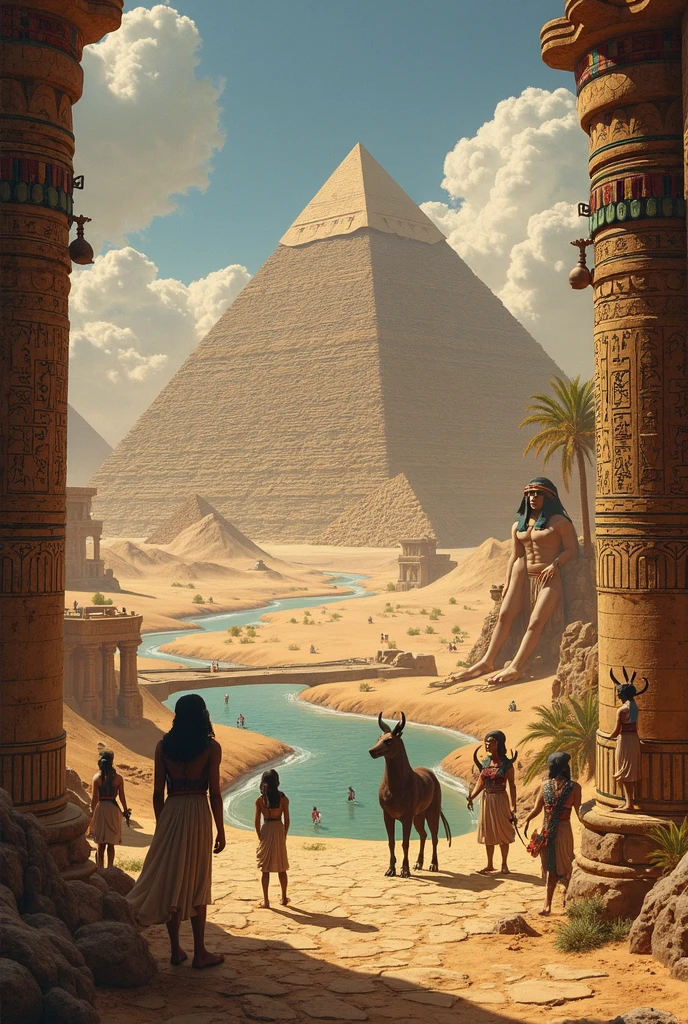Filipino Mythology: Exploring the Rich Pantheon of Bathala and Beyond
The mythology of the Philippines is a vibrant tapestry of gods, goddesses, and legendary creatures that reflect the country’s diverse cultural heritage. At the heart of this belief system stands Bathala, the supreme deity in Tagalog mythology, often associated with creation and the sky. Alongside Bathala, figures like Anito (ancestral spirits), Mayari (the moon goddess), and the serpent Bakunawa weave a complex narrative of cosmic balance and human connection to nature.
Bathala: The Supreme Creator in Filipino Mythology
In Tagalog mythology, Bathala is revered as the all-powerful creator of the universe. Known as “Maykapal” (the Maker) or “Abba” (Father), Bathala governs the heavens and is often depicted as a benevolent figure who shaped the world and its inhabitants. Legends from Luzon describe Bathala as residing in Kaluwalhatian, a celestial realm where deities and virtuous souls dwell.
Key Attributes of Bathala
- Creator Role: Bathala formed the earth, sky, and first humans from bamboo.
- Cosmic Authority: He controls natural phenomena like storms and harvests.
- Moral Judge: Bathala rewards kindness and punishes wrongdoing.
The Pantheon of Filipino Deities
Beyond Bathala, Filipino mythology features a pantheon of gods and spirits, each governing specific aspects of life. These deities vary across regions, reflecting the archipelago’s cultural diversity.
| Deity | Domain | Region |
|---|---|---|
| Mayari | Moon, Beauty, War | Tagalog, Kapampangan |
| Anito | Ancestral Spirits | Throughout Philippines |
| Bakunawa | Sea Serpent, Eclipses | Visayas, Bicol |
Mayari: The Radiant Moon Goddess
One of Bathala’s most celebrated children, Mayari, is the goddess of the moon, revered for her beauty and strength. In some legends, she lost an eye in a battle with her brother Apolaki (the sun god), explaining the moon’s gentle glow compared to the sun’s brilliance.
Mayari’s Cultural Significance
- Symbolizes balance between light and darkness.
- Invoked during nighttime rituals for protection.
- Associated with female empowerment in pre-colonial societies.
Anito: The Spirit World in Filipino Belief
Anito refers to ancestral spirits and nature deities deeply embedded in Filipino animism. These spirits inhabit trees, rivers, and mountains, acting as intermediaries between humans and Bathala. Offerings (like food or prayers) were made to anito to ensure good harvests or safe journeys.
Types of Anito
- Diwata: Benevolent nature spirits.
- Nuno sa Punso: Dwarf-like guardians of land.
- Albularyo: Shamans who communicate with anito.
Bakunawa: The Serpent of the Seas
The Bakunawa, a colossal dragon-like serpent, is central to myths explaining lunar eclipses. According to legend, Bakunawa attempts to devour the moon, prompting villagers to create loud noises (like banging pots) to scare it away—a tradition still echoed during eclipses today.
Bakunawa’s Role in Mythology
- Represents chaos and the unpredictable forces of nature.
- Linked to creation stories in Visayan folklore.
- Symbolizes the eternal struggle between order and destruction.
Creation Myths of Luzon and Beyond
Filipino creation stories often center on Bathala and the origins of Luzon, the largest Philippine island. One popular myth describes how Bathala molded the first humans, Malakas (Strong) and Maganda (Beautiful), from bamboo.
Variations of Creation Stories
| Region | Creation Myth |
|---|---|
| Tagalog | Bathala creates humans from bamboo. |
| Ilocano | Gods Aran and his brother split the sky and sea. |
| Mindanao | T’boli believe the world emerged from a cosmic egg. |
Modern Influence of Filipino Mythology
Today, these myths inspire literature, art, and festivals. For example, the National Historical Commission documents oral traditions, while contemporary authors reimagine tales of Mayari and Bakunawa. Indigenous groups, like the Igorot of Luzon, still practice rituals honoring Anito.
Resources for Further Reading
- Asian Studies Journal – Scholarly articles on Philippine folklore.
- Philippine Folklore Archive – A digital collection of myths.
Explore more fascinating stories and join our community on Facebook.com/zatiandrops for daily updates on mythology and culture!
While Bathala, Mayari, and Bakunawa dominate many myths, Filipino folklore brims with lesser-known deities who govern specific aspects of daily life. For instance, Idiyanale, the goddess of labor and good deeds, was invoked by farmers and craftsmen, while Dumangan, the sky god, ensured bountiful harvests. These figures highlight the intricate connection between mythology and livelihood in pre-colonial Philippines.
Idiyanale and Dumangan: Guardians of Work and Harvest
Idiyanale (or Dian Masalanta in some regions) presided over agriculture, craftsmanship, and virtuous labor. Rituals honoring her involved offering the first fruits of harvest or newly woven textiles. Meanwhile, Dumangan was believed to release grains from the heavens, symbolizing divine providence.
Roles of Agricultural Deities
- Idiyanale: Protector of weavers, potters, and farmers.
- Dumangan: Provider of rain and fertile soil.
- Lakapati: A gender-fluid deity of fertility and crops.
The Trickster Gods: Philippine Mythology’s Mischievous Spirits
Not all deities were benevolent. Figures like Makiling, a mountain spirit known for playing pranks on travelers, and Saragnayan, the Visayan lord of darkness who trapped the sun god, added layers of complexity to these tales. Their stories often served as moral lessons about humility and respect for nature.
| Trickster Figure | Region | Legend |
|---|---|---|
| Makiling | Laguna | Shapeshifts to test human kindness. |
| Saragnayan | Visayas | Imprisons the sun, causing night. |
| Tikbalang | Nationwide | Horse-human hybrid that misleads wanderers. |
Beyond deities, Philippine mythology teems with creatures that embody cultural fears and values. The Manananggal, a vampiric being that detaches its torso to hunt at night, warned against transgressions, while the Kapre, a giant cigar-smoking tree dweller, symbolized the mysteries of the forest.
Manananggal vs. Aswang: Distinguishing the Night Terrors
Though often conflated, the Manananggal (which severs its upper body) and the Aswang (a shapeshifting predator) have distinct traits. Aswangs infiltrate communities by day, while Manananggals attack pregnant women using elongated tongues. Both creatures reflect anxieties about female autonomy and societal taboos.
How to Ward Off Evil Creatures
- Place garlic or salt near windows (deters Aswang).
- Scatter sambong leaves to repel Manananggal.
- Seek an albularyo (healer) for protective amulets.
The Philippines’ 7,000+ islands fostered unique mythologies. In Bicol, the god Gugurang battles the volcano deity Asuang, while Mindanao’s Bagobo people revere Pamulak Manobo, the creator of flora and fauna.
Bicolano Mythology: Fire and Fury
Bicol’s legends center on volcanic activity. Gugurang, a righteous fire god, punishes evil by unleashing eruptions from Mount Mayon. His nemesis, Asuang, steals sacred fire to empower dark spirits—a metaphor for natural disasters.
Key Bicolano Deities
- Haliya: Moon goddess who battles Bakunawa.
- Bulan: Androgynous deity of the moon’s beauty.
- Onos: God of storms and floods.
Ancient Filipinos performed elaborate ceremonies to honor deities. The Pagtatawas ritual used candles and eggs to diagnose illnesses caused by spirits, while the Kanyaw festival in the Cordilleras involved animal sacrifices to appease mountain gods.
The Role of Babaylan: Priestesses of the Spirit World
Babaylans (or catalonans) were female or gender-nonconforming shamans who mediated between humans and spirits. They conducted healing rites, interpreted omens, and preserved oral traditions—roles suppressed during Spanish colonization.
| Ritual | Purpose | Materials Used |
|---|---|---|
| Pagtatawas | Diagnose spiritual ailments | Eggs, candles, herbs |
| Kanyaw | Harvest thanksgiving | Chickens, rice wine |
| Pag-aanito | Ancestor worship | Food offerings, idols |
Modern festivals like Pahiyas in Lucban (honoring San Isidro Labrador with roots in animist harvest rites) and Kadayawan in Davao (celebrating Manama, the Bagobo sun god) blend Catholic and indigenous traditions.
Pahiyas: A Fusion of Faiths
Though now a Catholic event, Pahiyas’ vibrant house decorations echo pre-colonial offerings to Idiyanale. Farmers hang rice stalks and produce to ensure future abundance—a practice once meant for deities, now adapted to saints.
Festivals with Mythological Origins
- Ati-Atihan: Honors the Aeta people and their animist beliefs.
- Sinulog: Dances mimic pre-Hispanic rituals to water spirits.
- Panagbenga: Flower festival linked to Diwata worship.
From graphic novels like Trese (featuring Alexandra Trese, a detective solving supernatural crimes) to films like Encantadia, modern creators reinterpret myths. Even video games like Genshin Impact draw inspiration from creatures like the Tikbalang.
Recommended Books and Films
- The Aswang Project – A documentary on mythical creatures (AswangProject.com).
- Mythology Class by Arnold Arre – A comic blending myths with college life.
- Balete City – A novel exploring Nuno sa Punso folklore.
Explore more fascinating stories and join our community on Facebook.com/zatiandrops for daily updates on mythology and culture!
The Underworld and Afterlife in Filipino Mythology
Filipino mythology presents a diverse view of the afterlife, with each region offering unique interpretations. The Tagalog people believed in Kasanaan, a shadowy underworld ruled by Sidapa, the god of death, while the Visayans spoke of Saad, a paradise for the virtuous. These realms were often guarded by fearsome creatures like the Sigbin, a vampiric hound that escorted souls.
Key Afterlife Realms
- Kasanaan: A gloomy underworld where souls wandered eternally.
- Maca: The Visayan paradise for brave warriors.
- Dalondongan: The Bicolano river separating the living from the dead.
Sidapa and Bulan: The Gods of Death and the Moon
One of the most poignant myths involves Sidapa, the god of death, and his unrequited love for Bulan, the androgynous moon deity of Bicol. According to legend, Sidapa tried to measure Bulan’s lifespan using a magical tree, only to be thwarted by the trickster god Languit, who made the tree grow endlessly. This tale explains the moon’s cyclical immortality.
| Deity | Role | Symbolism |
|---|---|---|
| Sidapa | God of Death | Represents mortality and fate |
| Bulan | Moon Deity | Symbol of eternal beauty and rebirth |
| Languit | Trickster Sky God | Embodies chaos and cosmic balance |
The Epic Heroes of Philippine Folklore
Beyond deities, Filipino mythology celebrates mortal heroes whose exploits blurred the lines between legend and history. Lam-ang, the Ilocano warrior born speaking and capable of superhuman feats, and Bernardo Carpio, the giant trapped between two mountains, are among the most revered. Their stories often symbolize resistance against oppression.
Legendary Heroes and Their Feats
- Lam-ang: Defeated monsters and revived himself after death.
- Bernardo Carpio: A folk hero prophesied to free the Philippines from colonizers.
- Datu Sumakwel: A wise leader in the Hinilawod epic of the Panay Bukidnon.
Mythical Weapons and Artifacts
Filipino myths feature enchanted objects imbued with divine power. The Kampilan, a wavy-bladed sword used by gods and heroes, could summon storms, while the Agimat (talismans) granted invulnerability. These items were often tied to moral lessons—abusing their power led to downfall.
Notable Mythical Objects
- Kampilan: The sword of Lapu-Lapu, said to be blessed by Bathala.
- Bakunawa’s Pearl: A gemstone that controlled tides, sought by fishermen.
- Balaraw: A dagger that could fly back to its owner, used by shamans.
The Influence of Trade and Foreign Cultures
Pre-colonial Philippine mythology absorbed elements from neighboring cultures due to maritime trade. Hindu-Buddhist concepts like karma appear in tales of reincarnation, while Arabic influences introduced djinn-like spirits called Jin in Sulu myths. This syncretism enriched the archipelago’s folklore.
| Foreign Influence | Adapted Concept | Example in Myths |
|---|---|---|
| Hindu-Buddhist | Reincarnation | Souls returning as animals or natural phenomena |
| Arabic | Jinn Spirits | Jin in Tausug folklore |
| Chinese | Dragon Lore | Bakunawa’s serpentine form |
Endangered Myths: Preserving Oral Traditions
Many indigenous myths risk fading due to modernization. Groups like the Ibaloi of Benguet and the T’boli of Mindanao struggle to pass down stories like the Ullalim epic. Organizations such as the National Commission for Culture and the Arts work with elders to document these narratives before they disappear.
Threats to Mythological Preservation
- Urbanization: Younger generations migrate, breaking oral tradition chains.
- Religious Shifts: Conversion erodes animist practices tied to myths.
- Language Loss: Indigenous dialects, crucial for storytelling, decline.
Mythology in Daily Life: Superstitions and Omens
Even today, mythological beliefs shape Filipino customs. Avoiding balete trees at night (home to spirits), or interpreting bird calls as omens, stems from ancient lore. Pregnant women wear anting-anting (amulets) to ward off Manananggal, showing how myths endure in modern superstitions.
Common Mythological Superstitions
- Whistling at night attracts Aswang.
- A Tikbalang crosses your path if you get lost in forests.
- Dreaming of teeth falling out signals ancestral Anito warnings.
Sacred Landscapes: Mountains and Rivers in Myth
Natural sites like Mount Makiling (linked to the goddess Maria Makiling) and the Chico River (believed to house water dragons) are considered sacred. These places are protected by taboos, such as prohibitions against cutting certain trees or polluting waters, rooted in mythological reverence.
Legendary Natural Sites
- Mount Apo: Home to Mandarangan, the Bagobo war god.
- Hinulugang Taktak: A waterfall where a giant bell was silenced by spirits.
- Bulusan Lake: Said to be the lair of a dragon guarding gold.
Explore more fascinating stories and join our community on Facebook.com/zatiandrops for daily updates on mythology and culture!


